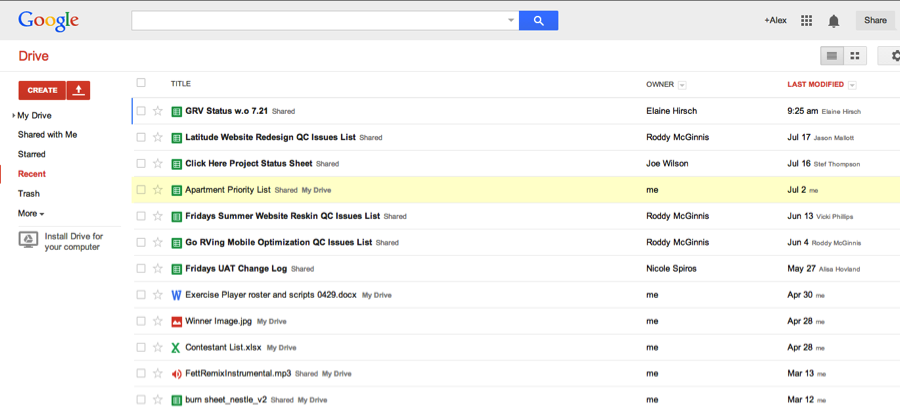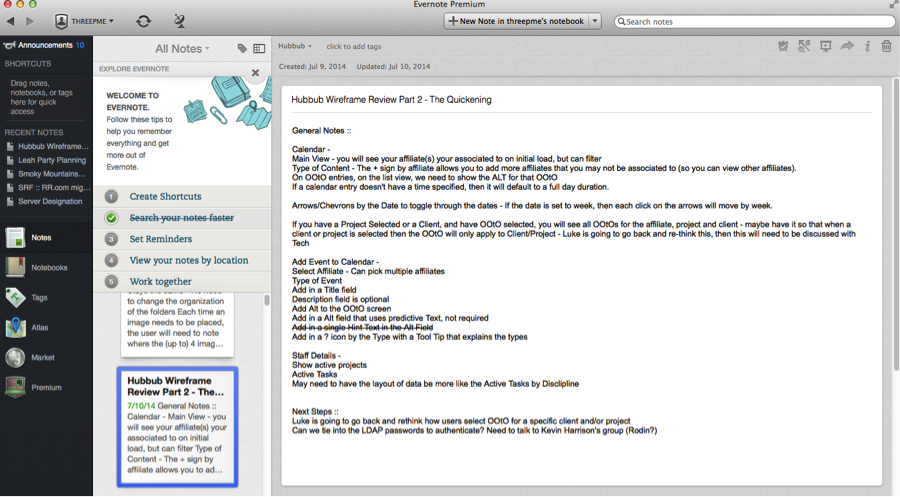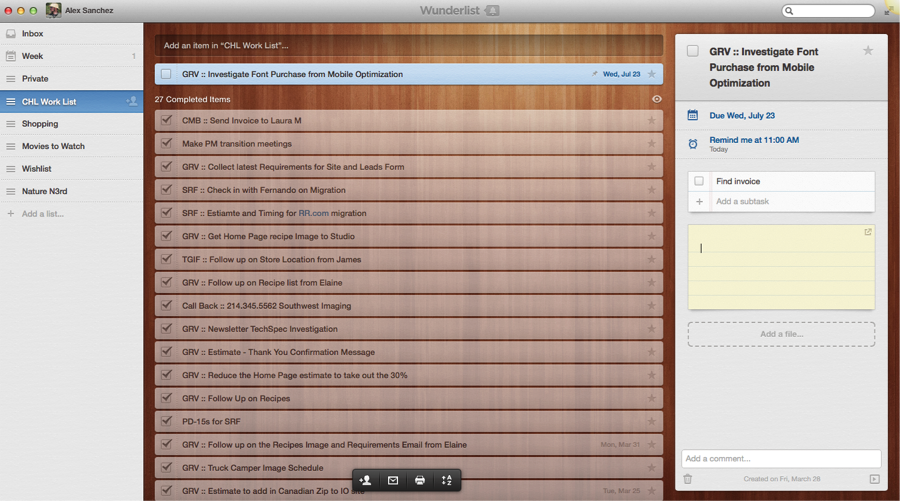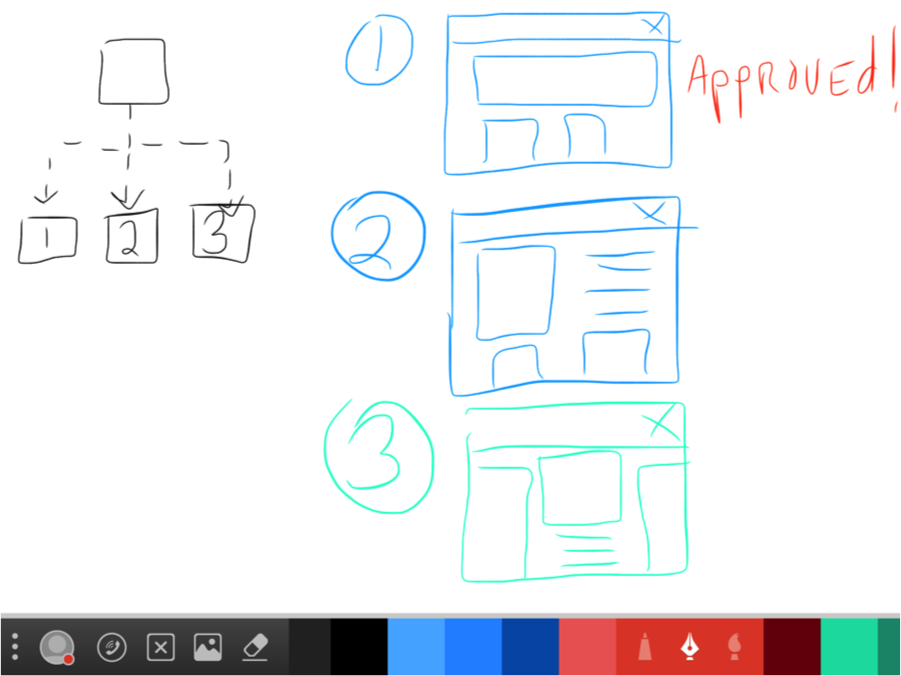Collaborative Productivity Tools
Published on
July 24, 2014
By Alex
Business Analyst
Traditionally, when colleagues needed to collaborate, there was the headache of scheduling a meeting that worked for all the necessary stakeholders, putting together a streamlined agenda and planning an efficient work session. If the meeting went off track, then you would have to repeat the process until you addressed all the issues. Each time the meeting process had to be repeated, it caused a time delay in productivity.
Technology has been slowly chipping away at the roadblocks inherent with collaboration. The introduction of mobile devices and the velocity of mobile technology advancements have allowed a new generation of online real-time tools that (almost) eliminate all the usual barriers.
The app marketplace is becoming saturated with productivity tools. It’s becoming more and more difficult to decide which one(s) will work best for you and your organization. From the perspective of keeping track of notes, tasks, documents and sharing ideas, I have found these to be the best tools for the job.
Google Apps
Google Apps is the big man on campus. Over the last few years Google has modified and improved its apps service from a novelty competitor to Microsoft Office to being the best office suite available. Aside from having access to free office applications, what makes Google Apps one of the best productivity tools is the ubiquity and ease of the tool. Since everyone has a Google account, it is very simple to get your colleagues to collaborate and share work using Google Apps.
The other facet of Google Apps that is often taken for granted is the way Google has integrated all its services. Google has masterfully mixed Gmail, Google Apps, YouTube, Google Drive, Google Hangouts, Google+ and Android into one massive system. Each application can be used separately or in any combination per the needs of the user. The versatility of the applications and the flexibility of the ecosystem make Google Apps a must for everyone.

Evernote
Evernote is “the jack of all trades/master of all” note-taking system. It not only does standard text notes, but also allows for images, drawings (on touchscreen devices), file attachments and audio notes (or a mix).
What sets Evernote apart from other note-taking systems is the wide variety of notes and formats, collaboration of notes and the integration of third-party apps and devices.
The collaboration system allows users to share their notebooks with other Evernote users. This allows for easy distribution and editing of meeting notes, project notes or any other content that can be generated in Evernote.

Evernote has its own marketplace to purchase apps, accessories and devices. Evernote works with many third-party developers so that their apps work seamlessly with Evernote, then those apps are listed in the Evernote app store. Evernote also has a line of branded accessories and devices. For those who like the traditional pen and paper, Evernote offers a moleskin notebook that is specially designed so that taking a picture of your notes with your mobile device will index the handwriting and file the note into the appropriate notebook. The Evernote scanner will digitize paper documents and automatically file them into Evernote. The Evernote Stylus is not only designed for precision writing (1.9mm nib) on a touchscreen, but also knows to ignore your wrist, which is on the screen when you write (using Penultimate app integration).
The only downside to Evernote is that to activate some of the features, the user has to pay for a premium account, although the free version of the app has all the features that most users will ever need.
Wunderlist
Sometimes you just need a simple checklist, whether that be for your work project or your shopping list. Wunderlist takes the checklist and adds real-time collaboration, sharing and the ability to add reminders, subtasks, notes and file attachments. Wunderlist is perfect for anyone looking for a system that is specifically geared for lists or tasks and doesn’t want any other functionality clutter.

If This Then That

If This Then That (IFTTT) is relatively new to the app markets. The system is simple in concept and versatile in its capabilities. If This Then That allows users to create a simple if/then statement to make apps integrate in ways never thought of by the app designers. Users create their if/then recipes either on their mobile device or through their browser, and can share the recipe with other users on the IFTTT site. There are enough recipes on the site that you may never have to create your own, although it is still fun to try.
TalkBoard
TalkBoard is a collaborative whiteboard for iOS devices. It allows user(s) to sketch and color their ideas, then share that whiteboard with other TalkBoard users. There is also a real-time collaboration feature that can join multiple users to an agile whiteboard, and each user can contribute to the drawing.

Of course, the usefulness of any tool is in how it is utilized. Sometimes you just need something simple to track or convey an idea; other times you need a robust system that allows for many types of inputs and outputs. If you work within a team, you will need to share your ideas and collaborate with your fellow team members. This is where the new technologies make all the difference. Having a system that can instantly share information and allow for remote collaboration reduces barriers that have persisted in the more traditional methods.